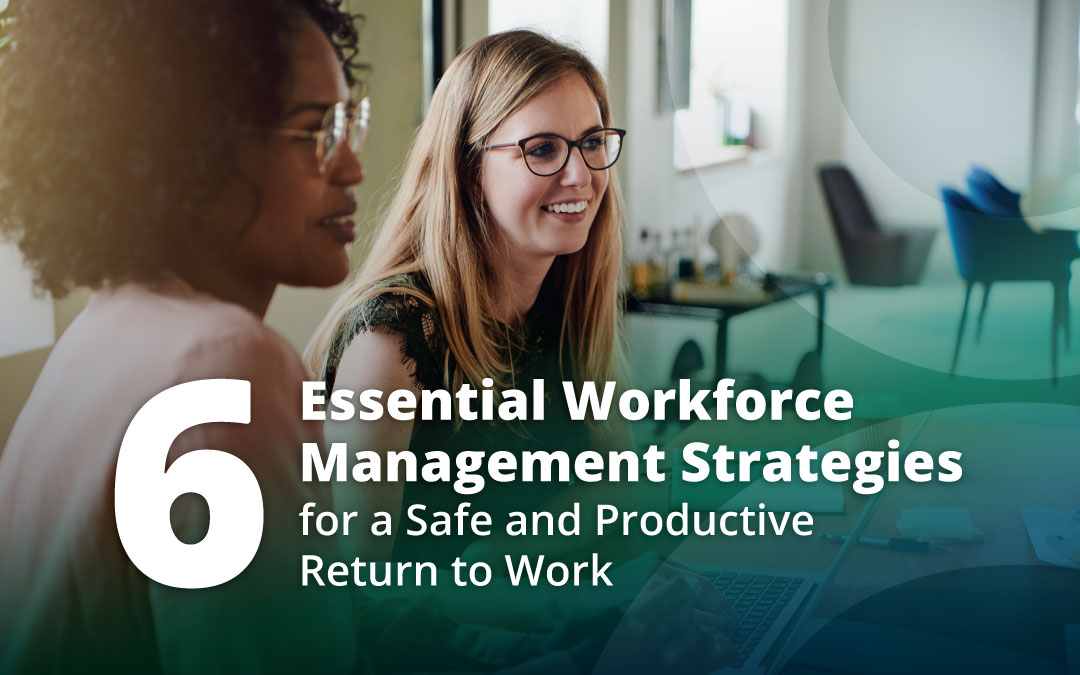How to Meet and Exceed Your Employees’ “New Normal” Rights and Expectations


Jill Keelan
Director, Product Marketing
After months of adjustment to a virtual workplace, organizations have begun to rebuild their return-to-work strategies just in time to uproot their employee’s normalized remote arrangements. If your plan to regroup your workforce considers factors that will boost employee engagement and productivity, you’re already on the right track. But what exactly do those plans look like and how will you go about reassuring your entire workforce that their safety and legal rights will be protected through an ever-evolving “new normal”?
From regular hazard assessments to safeguarding employee confidentiality, there are many factors that you will need to initially consider and continue to revisit as your business strives to offer its employees a new sense of balance and security. During a time where dependable leadership is paramount, you must not only meet, but exceed your employees’ expectations to gain the highest levels of engagement from the people who are trusting you with their livelihood and safety. These 6 steps can help:
1. Stay Informed and Follow Guidelines
Continue to stay abreast with and follow any current guidelines from leading health and government authorities, relevant to the location(s) and industry in which your business operates. While these guidelines remain inherently advisory and do not serve as neither standards nor regulation, they are intended to assist employers in providing the safest workplace possible. Examples of guidance may include:
- Conducting a hazard assessment that examines potential COVID-19 exposures for each job category
- Performing daily transparent and fair health assessments of employees
- Discontinuing tasks where personal protection equipment is required but not available
- Establishing protocols for addressing reports of COVID-19 positive exposures
2. Implement Social Distancing Policies
It is critical to outline social distancing guidelines specific to your organization’s environment. This means evaluating each location to determine where social distancing practices may be disrupted and mitigating risks with clear signage and direction. Some social distancing policies to consider include:
- Staggering work hours and/or alternating days of work for different groups
- Limiting the number of people that can occupy a specific area
- Rearranging work areas, break rooms, common areas, and time clock stations
- Placing signage to provide directional guidance such as one-way directions and/or paths of travel through a location
- Utilizing plexiglass shields or other barriers to block airborne particles between spaces
3. Understand Employee Sentiment
Make a concerted effort to understand how your employees feel about their return to work and the procedures put in place to safeguard their health and well-being. This can be as simple as pushing out short automated pulse surveys to gain “in the moment” employee feedback. Keeping the lines of communication open and seeking feedback during times of transition will help reassure your employees that their voices matter in the larger decisions of the company.
Ask employees to rate how they feel about returning to work and if there is anything your business can do to ease any apprehensions. As the workday begins, ask employees if they have adequate access to effective personal protection equipment. At the end of a shift, ask if employees felt as though social distancing practices were effective and how they might be improved upon.
6 Essential Workforce Management Strategies for a Safe and Productive Return to Work
Download this eBook to learn 6 essential workforce management strategies that will help you design a safe and structured return-to-work plan.
4. Know Your Legal Obligations
Legislation and collective bargaining, or union, agreements will often include provisions related to layoffs, furloughs, and leave. Throughout the COVID-19 pandemic, many government authorities and organizations have instituted new and/or temporary policies to support both employers and employees. Continually monitor these changes and implement processes to simplify and prove compliance.
Keep in mind that you should also implement and reinforce measures to prevent workplace discrimination or failure to accommodate claims. Some employees of particular races, religions, or cultures are more susceptible to workplace harassment than others. You should also review confidentiality procedures to ensure all medical information is being kept confidential.
5. If Possible, Be Flexible with Schedules
With diminished access to childcare, school closings, and additional consideration for individuals more vulnerable to COVID-19, employees need more flexibility. If your business can support more flexible work arrangements, such as working from home and flex time, you may want to consider defining policies that govern these options. This will ensure that you have the coverage you need, when you need it, and that employees have the flexibility to provide and care for their loved ones.
6. Implement Temporary Incentive Pay Programs
If employees are being placed in situations where they have a greater risk of exposure, you may want to consider implementing temporary incentive pay programs, such as hazard pay premiums. These programs show that you understand the risks your employees are undertaking by returning to work and that you value their brave contributions.
Now is the time to have the proper workforce management solution in place to ensure that your employees’ rights and expectations are accounted for as they transition to a “new normal”. For an extensive guide that will help you plan your entire return-to-work journey, download our latest eBook, 6 Essential Workforce Management Strategies for a Safe and Productive Return to Work.

